The Dutch shepherd dog is a purebred herding dog originating from the Netherlands. This dog breed, also known as the “Hollander” or “Dutchie,” is a rare breed of such high quality that great efforts have been made to prevent its extinction.
These dogs were first valued for their ability to learn quickly and work for their owners day after day in all types of weather. As farm dogs, they were used to herd sheep and cattle and guard the barnyard birds and livestock against predators. Today, Dutch Shepherds are often used by police forces worldwide to search for missing people and locate narcotics.
These dogs are intuitive, intelligent, and very good at sensing the “personality” of other animals they come in contact with.
Dutch shepherd dogs typically cost $1,000–$3,500.
TABLE OF CONTENTS
What is a Dutch Shepherd?
Do you love dogs with lots of energy, but want a breed that will stick close to you when you hike through a dense forest or cross a large field? Originally bred to herd sheep and guard farms, the Dutch Shepherd – also known as the “Hollander” or “Dutchie” is a rare breed of such high quality that great efforts have been made to prevent its extinction.
Dutch Shepherds have athletic bodies. They can run all day with only short rests. Their instinct to herd makes them dogs that are both loyal and eager to work. This is a great dog for single people, young couples, and families with children. As long as you can ensure that your Dutch Shepherd gets enough exercise and stimulation, he will be a wonderful companion for many years to come.
Dutch Shepherds originated in the Netherlands. These dogs were first valued for their ability to learn quickly and work for their owners day after day in all types of weather. As farm dogs, they were used to herd sheep and cattle, guard the barnyard birds and livestock against predators, and in the 1800s were even trained to pull milk carts.
As farming became more industrialized, dogs were not as important to farmers and serious breeding of Dutch Shepherds decreased. During World War II the Germans invaded the Netherlands confiscated Dutch Shepherds since they were so easy to train to work with soldiers. When many of the dogs were killed in battle, and others died of starvation, the breed nearly became extinct.
Nowadays, Dutch Shepherds are often used by police forces worldwide to search for missing people and locate narcotics. Just this year, a five-year-old Dutch Shepherd sniffed out cash, weapons, and drugs during a routine traffic stop. And in the Netherlands, where there are still many farmers raising sheep, the Dutch Shepherd continues to work as a herding dog.
Appearance
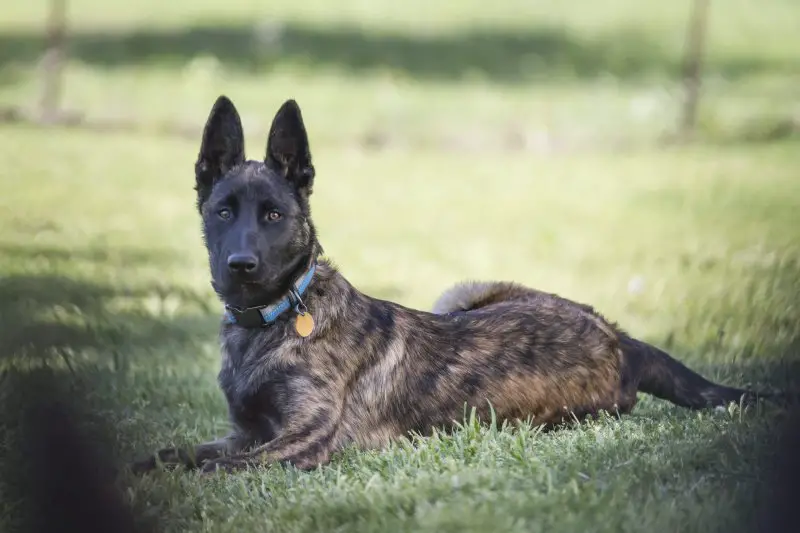
From Adobe Stock
This is an attractive dog with well-proportioned features and limbs, and a body that is slightly longer than it is tall.
With a steady, bolt upright stance, the Dutch Shepherd always appears to be ready for action. Its dark, almond-shaped eyes are not too far apart and not too close together, giving it an intelligent expression.
The Dutch Shepherd’s skin is taut, and there are no folds in the neck. Its muscles are sleek and lean and its body is solid and firm. The head is wedge-shaped, distinguishing it from other dogs with similar physical characteristics.
Dutch Shepherds have strong teeth, beautifully aligned with the teeth in the upper jaw slightly overlapping those on the bottom (known as a “scissors bite”). An underbite in a Dutch Shepherd is viewed as a flaw. The Dutch Shepherd holds the tail and ears erect and has a long, straight muzzle.
The Dutch Shepherd has dewclaws on its front legs but not on its back legs, and that is a unique trait that can help you identify a purebred dog when searching for a puppy to buy. The toes are arched, with black nails.
Dutch Shepherd Weight and Size
Dutch Shepherds are medium-sized dogs when fully grown. Adults can weigh between 50 and 70 pounds (23 to 32 kilos), and grow to anywhere between 21 and 24 inches tall at the shoulder.
Common Colors
When the breed was first officially recognized in 1898, it came in a variety of colors. But because it closely resembled German Shepherd and Belgian Shepherd dogs, by 1914 the only color accepted for purebred Dutch Shepherds was brindle. This means the dog has stripes similar to that of a tiger, but the contrast between the colors in a Dutch Shepherd’s coat is generally not as noticeable as the bright orange against coal black of a tiger’s coat.
Dutch Shepherd brindle coats usually have a brown base, with stripes ranging from silver or gold sand color to chestnut red. If you are thinking about buying a dog that is mostly black, white, brown, or grey, you can be sure it is not a Dutch Shepherd.
If a Dutch Shepherd has large patches that are pure black or white, it is considered to be inferior in comparison to other dogs of the same breed. However, a black face is acceptable.
Dutch Shepherds with wire hair can be blue-gray or salt and pepper colored.
Coat
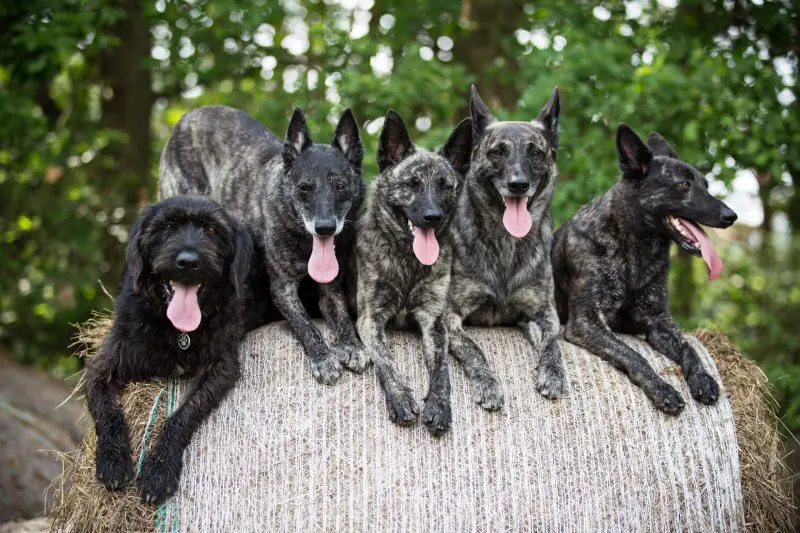
From Adobe Stock
While accepted coloring in this breed is limited, the length of the Dutch Shepherd’s coat can be long-haired, short-haired, or coarse. Dogs with the coarse, wirehaired coats are the rarest. The short-haired dogs are the most desirable for working with police and soldiers since they require the least amount of grooming.
The short-haired type has short, bristly, dense fur. The long-haired type has long, straight, coarse hair. While hair on the legs and feet and head and ears is short, the tail has long plumes.
The wire-haired type has dense, very coarse hair. Even its lips and eyebrows are hairy, and it has noticeable whiskers and a beard. The tail is also covered with a layer of rough hair.
All three types of Dutch Shepherds have woolly undercoats.
Bred to herd sheep and work on farms year-round, the coats of Dutch Shepherds evolved to keep them comfortable in all types of weather. While no dogs should exert themselves for too long when temperatures are extremely hot, your Dutch Shepherd will enjoy accompanying you on walks and longer trips to all different locations and in all weather conditions.
Personality and Temperament
Behavior around other dogs
Dutch Shepherds are intuitive, intelligent dogs, and they are very good at sensing the “personality” of other animals they come in contact with. Bred to herd sheep and goats, Dutch Shepherds can maintain a comfortable distance from wary or nervous dogs on the one hand, or initiate play with more confidant ones.
In general, Dutch Shepherds are calm and non-threatening around other animals. They rarely bark and are not naturally aggressive, so when encountering new dogs will not be as intimidating as other large breeds.
Is a Dutch Shepherd a Good Family Dog?
Dutch Shepherds are excellent family dogs. They are loyal, intelligent, and extremely friendly towards children and other dogs. This is not a dog that will by nature initiate fights, or bark at every new person or animal it encounters.
Unlike high-strung dog breeds, the Dutch Shepherd is so confident and calm that it can adapt to almost any situation and lifestyle, and actually loves adventure. However, it is not recommended to raise a Dutch Shepherd in an apartment without a yard, because it will be hard to give your dog as much physical exercise and stimulation as it needs.
Despite its love of children, a Dutch Shepherd should not be left for long around children if it isn’t supervised by a responsible adult. Because they are highly intelligent and independent by nature, Dutch Shepherds can be both obstinate and mischievous. Your Dutch Shepherd can get into trouble if he senses the children don’t have enough authority to control him, and there is nobody really in charge.
In addition, from a young age discourage your Dutch Shepherd from roughhousing with the family children. While it may be cute when it’s rolling around on the floor with your kids, as the dog grows it won’t know the extent of its own size and strength, and wrestling with a human can be dangerous.
The Dutch Shepherd is neither too shy, or too aggressive. They let their owners know when a stranger is approaching, but are also ready to go to new places and meet new human and animal friends at any opportunity. Your Dutch Shepherd will recognize one member of the family as its ultimate owner and will look to that person for instructions. On the other hand, he will become deeply attached to every member of the family.
In short, this dog breed is very well balanced, very predictable, and both loving and lovable. A perfect recipe for successful integration as a family dog.
How to Train a Dutch Shepherd
Training a Dutch Shepherd should begin as early as possible, even the very day you bring your puppy home. These dogs need early and frequent exposure and socialization to people and other dogs. By nature, Dutch Shepherds are very versatile and will adapt to almost any dog training and work program you set them up for.
Dutch Shepherds also need consistency, so they don’t try to get away with behavior that is sometimes allowed and sometimes not. For example, if you don’t want your Dutch Shepherd to sleep in your bed, then NEVER let him on your bed. And if sitting at the top of the porch steps is allowed, then always allow it (even if the dog is in your way when you try to enter and leave the house.
With a Dutch Shepherd, yes is always yes, and no is always no. If your instructions are consistent, his behavior will be consistent.
Dutch Shepherds are highly intelligent, and will actually enjoy learning to perform “jobs” rather than perform “tricks” or play games. These dogs can be taught to track, search, and rescue. They can be trained to compete in dog sports, and the wire-haired breeds are particularly suited for army and police work because of their hardy constitutions.
When walking or running with your Dutch Shepherd, keep him on a short lead, next to or behind you. That teaches him that you are the “alpha” or the leader of your pack, and he will learn to take his cues from you regarding guarding and “protecting” your family “pack”. Growling and barking should always be discouraged, as you have not purchased him to become a fierce guard dog. The goal is to have him learn to watch out for you, but not to intimidate or attack any people or animals he encounters.
The best way to train a Dutch Shepherd is by using treats in response to multiple repetitions of the desired behavior until the dog clearly understands what you want from him. Its obedient side will outweigh its stubborn side if you convince your dog that you are worth loving and obeying at all costs.
Dog breeders in the Netherlands are investing a lot of effort in making sure this breed does not go extinct, and that its reputation as an excellent working and family dog is not ruined by poor breeding and training methods. In the Netherlands, there are actual “Dutch Shepherd Behavioral Therapists” who specialize in training and re-training this breed. If you can afford the trip, you can travel all the way to the Netherlands to get this specialized training for your puppy.
How To Care For a Dutch Shepherd
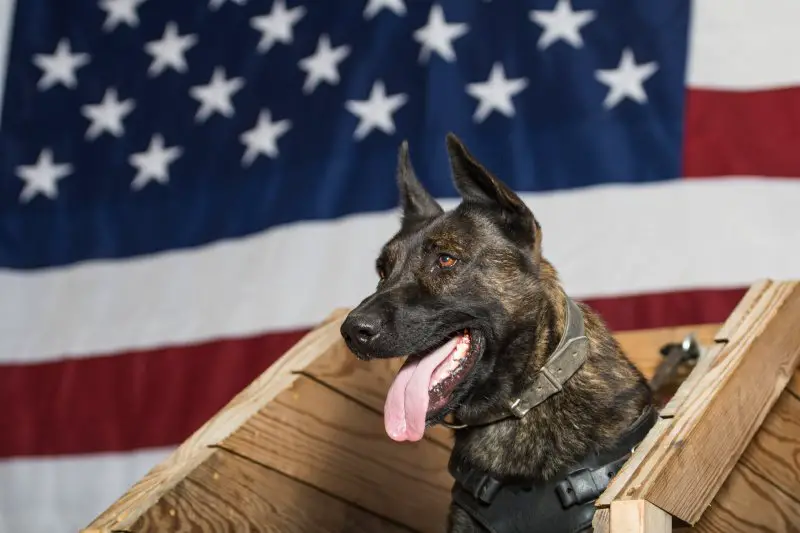
From Adobe Stock
Exercise Requirements
Young puppies don’t need too much exercise, but they need a lot of company. Don’t leave your puppy alone for more than a few hours, and then make sure to play with it for half-hour periods several times while you are home.
If you need to keep your puppy in a crate when you are not around, to prevent him from engaging in destructive behavior, compensate for the time spent in confinement by giving him extra time to exercise throughout the rest of the day.
Vigorous exercise is not a special treat for your older Dutch Shepherd – it is a daily requirement. If all you can manage is a long walk every day, your dog will learn to adapt. But if you want to give him what his mind and body truly need, take him to fields and forests where he can run far and fast for as long as he likes. Don’t be afraid of losing your Dutch Shepherd, because his strong herding instinct will keep him coming back frequently to see where you (his “herd”) are. If you can jog or ride a bike with him running free beside you several times a week, you will be his dream-owner come true.
Grooming and Shedding
Dutch Shepherds essentially have two coats. The undercoat for all of them is short, and the topcoat is short, long, or wired. The double coat protects these dogs from extreme temperatures, and help keep them dry.
Dutch Shepherds with long and short hair should be regularly brushed to keep their fur clear of dead hair and matting. These dogs shed their undercoats when the seasons change in the Spring and Fall and will need to be brushed daily during those periods.
The wirehaired type needs the attention of a professional groomer several times a year. Because its coat is so thick and dense, it should never be brushed. Instead, a groomer will professionally pluck dead and loose hairs and will remove excess hair on the ears. Between appointments with the groomer, you can use a coarse comb to gently comb your dog’s “difficult” hair.
Do not bathe your Dutch Shepherd unless absolutely necessary. Even the best dog shampoo removes the natural oils from your dog’s skin.
What To Feed A Dutch Shepherd
Like all purebred puppies, your Dutch Shepherd needs high-quality food if you want him to reach his mental and physical potential as he grows. Most good commercial dog foods contain the ultimate combination of carbohydrates, proteins, vitamins, and minerals that your Dutch Shepherd needs.
If your Dutch Shepherd has a very active lifestyle, and spends a lot of time engaged in physical activities outside, he will need food that is high in protein. To prevent bloating, divide the recommended amount of food for your dog into two daily meals.
Known Health Problems
Compared to other dogs in the Shepherd family, Dutch Shepherds generally are not born with genetic problems. They are strong and healthy dogs, bred to withstand minimal amounts of food and harsh weather conditions. Dutch Shepherd dogs live for as long as 12 to 15 years, while other large dogs typically live only 10 to 13 years.
However, as is the case with many large breed dogs, developing hip dysplasia is always a possibility. As your dog gets older, you will need to keep an eye out for any signs of stiffness or limping when he walks and runs.
One possible problem that can be inherited is a condition called Goniodysplasia. It causes the fluid flow from the eyes to be restricted and can cause blindness if not treated. It most often affects the wire-haired variety of Dutch Shepherds. The Dutch Breed Club requires that both potential parents be tested for Goniodysplasia before breeding, though two dogs that are a risk for developing this condition can produce puppies who never suffer from it.
Another rare disease that Dutch Shepherds can inherit is called Inflammatory Myopathy. It causes progressive muscle degeneration, and there is no known cure. It is very painful for the dogs but does not become apparent until the puppy afflicted by it reaches the age of three to six months.
The best way to ensure your Dutch Shepherd does not develop any of these debilitating conditions is to carefully check who its parents are. Buying a puppy without official papers won’t guarantee he is healthy, no matter how cute and active he appears to be.
Dutch Shepherds and Water
Dutch Shepherds are one of the breeds that absolutely love water. With a coarse, water repellent upper coat, and an undercoat that is dense and insulating, the Dutch Shepherd is perfectly suited to get wet and not get chilled.
Even though Dutch Shepherds are natural swimmers, puppies should be gradually introduced to water. They need to learn how to behave safely near and in the rivers, lakes, and swimming pools. Before leading him to the water for the first time, make sure the puppy is old and strong enough to stand stably in the water. Make sure there are no sudden drops where the water gets too deep for your puppy to stand. If your puppy doesn’t know and obey basic commands such as “come” and “stay”, it is still too dangerous for him to try swimming even if you are supervising.
The first time you introduce your puppy to water, you should get in before him, and then he will follow your lead. Never throw or push your Dutch Shepherd into the water, because he will resent the rough and unpredictable behavior. Your dog is not a person who can laugh off being scared by the one person he trusts the most.
As with all training sessions for Dutch Shepherds, keep them relatively short and build each new lesson on what was learned in the previous lesson.
If your Dutch Shepherd seems to be overly fearful of water the first time you try to coax him in, bring one of his favorite toys that float. Enter the water and place the toy on the surface between you and your dog. Call your dog and gently encourage and praise him to reach the toy. At first, place the toy in water that is shallow enough for the dog to stand in. As you repeat the exercise, move the toy gradually farther away from the edge of the pool or the shore, so your dog is forced to paddle a little bit.
Some Dutch Shepherds never really learn to enjoy themselves in the water, no matter how well they learn to swim. That is because of their strong herding and protecting instincts. They are so anxious about keeping you safe that they can’t relax and enjoy a cool dip. There are even Dutch Shepherds that nip their owners or grab their owner’s clothing with their teeth in an effort to drag them back to shore.
If you are patient and expose your Dutch Shepherd to water early enough and often enough, he will gradually learn to love water play and stop worrying about anything happening to you. Swimming is a wonderful way to burn off your Dutch Shepherd’s boundless energy without requiring you to run or cycle and work up a sweat.
Buyer’s Guide
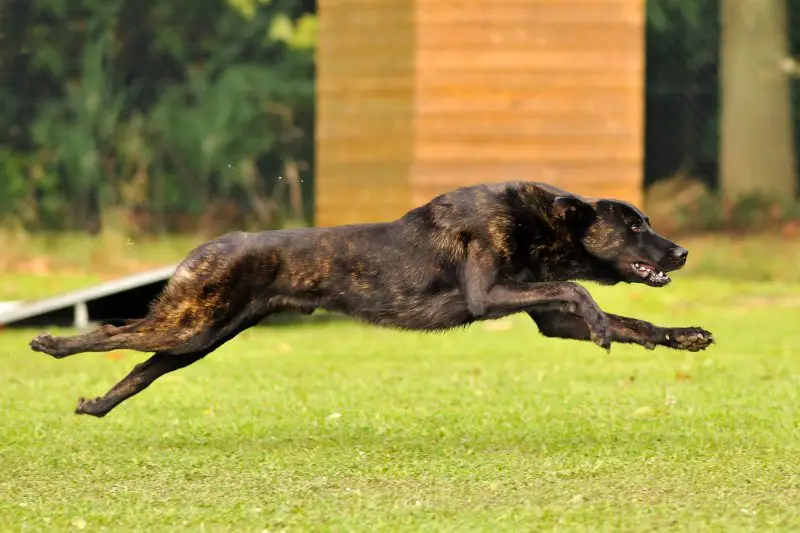
From Adobe Stock
How to Choose a Dutch Shepherd Puppy
Dutch Shepherd litters have between six and eight puppies. The puppies should not be taken away from their mother and adopted until they are a full eight weeks old.
Don’t buy a puppy based on a photograph or video clip alone. When you go to choose a puppy ask to see it interacting with its siblings and mother.
Some signs of a Dutch Shepherd puppy that may not be a purebred, or that has health problems include:
- A tail that hangs down or to the side when the puppy stands
- A nose that is not pure black
- A pronounced overbite or underbite
- Round or bulging eyes
- Floppy ears
A useful source for researching Dutch Shepherd breeders in the United States is the Dutch Shepherd Dog Club of America. If you aren’t so concerned with the dog’s bloodline or are willing to adopt an older dog, consider contacting the North American Dutch Shepherd Rescue.
If you want to buy a puppy from the Netherlands, the Dutch Shepherd Dog Club in that country has strict rules and supervision with regard to breeding dogs and selling puppies.
How Much Do Dutch Shepherds Cost?
Dutch Shepherds are relatively expensive dogs because they are excellent dogs and they are rare and not always available to purchase. The average price of Dutch Shepherd puppies is $1000 to $2000. However, top dogs bred as show dogs or to propagate their pedigree lines can be as expensive as $3500.
If you choose to adopt an abandoned Dutch Shepherd from a shelter you will pay a lot less, even for a purebred dog. The price is on average $300. The disadvantage of adopting a shelter dog is you may never know about your pet’s lineage, and will not be able to professionally breed him. Also, shelter dogs often have bad habits that are difficult to break due to abuse, a lack of training, or bad training when they were puppies.
Dutch Shepherd vs German Shepherd
At some point on your quest to acquire a dog, you may wonder what the difference is between a Dutch Shepherd and a German Shepherd. German Shepherds are popular family and work dogs, are more common than Dutch Shepherds and have a certain image that the rarer Dutch Shepherd hasn’t yet earned.
Why would you want to buy a dog that few people have heard of, and that looks a little scary and wild with its gold and silvery stripes when you can get a showy German Shepherd that looks like he works for the Navy Seals or police? The question is, are you looking mainly for a high maintenance status symbol of a dog, or a pet that blends into the scenery and earns its keep by virtue of its good traits and qualities alone?
The table below will help you understand the differences and similarities between the two breeds, and help you make the final decision of which dog best meets your needs and expectations.
| Trait | Dutch Shepherd | German Shepherd |
| Herding dog | ✔ | ✔ |
| Physically Active | ✔ | ✔ |
| Loyal to their owners | ✔ | ✔ |
| Intelligent | ✔ | ✔ |
| Alert and responsive | ✔ | ✔ |
| Shedding | minimal | heavy |
| Weight | 50 – 80 pounds | 50-90 pounds |
| Exercise needs | Maximum | Average |
| Lifespan | 12 – 15 years | 9 – 13 years |
| Health issues | Very few | Prone to Dysplasia |
| Training | Can be obstinate | Very eager to please |
Another dog that is very similar to the Dutch Shepherd is the Belgian Shepherd, also known as the Belgian Malinois. These dogs are almost identical to Dutch Shepherds in every aspect, except for their coloring and their behavior around children and animals.
While you might be tempted to buy a fawn or mahogany colored Belgian Malinois, just because they are more attractive than Dutch Shepherds, these dogs have other traits you should consider before bringing one home to hang out in your living room. Belgian Malinois are more guard dogs than herding dogs, and not as interested in interacting with children and other family pets as the Dutch Shepherd is. Belgian Malinois dogs are serious hunters, and better suited to work as police and army dogs than to live with families.
Dutch Shepherd Summary Table
| Pros | Cons |
| Friendly towards children and other dogs | Sheds heavily twice a year |
| Can be taught to work for its owner | Needs lots of daily exercises |
| Highly intelligent and easily trainable | Can become overprotective if not well trained |
| Loyal and eager to please | Needs strict boundaries to learn he is not head of the family “pack” |
| Healthy – low medical maintenance | A rare breed, with fewer choices of top pups |
Summary
A Dutch Shepherd if the perfect pet for you and your family if you want a dog who is energetic, smart, will enjoy accompanying you on all sorts of adventures.
Do you have the time and energy to care for an active, athletic dog? Do you have a large yard, and are you capable of taking your dog on trips to wide-open spaces on a weekly basis? Are you prepared to share your life with a constant companion who will rarely leave your side when you are at home? If the answer to all these questions is yes, then you can feel confident that a Dutch Shepherd is a right choice when choosing a breed to buy.
A Dutch Shepherd is not the kind of dog to acquire if you are looking for a lap dog, or a dog to show off to your friends while sitting at an outdoor café with your pet lying docile at your feet. This is a dog for people who are active and young, who are willing to spend the next 12 to 15 years of their lives engaging in all sorts of activities just to keep their dog happy and healthy.
The added bonus of owning a Dutch Shepherd is that by getting all the extra exercise while caring for your dog, you will most likely be happier and healthier too.

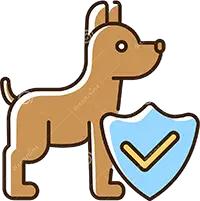



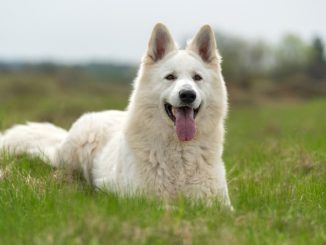
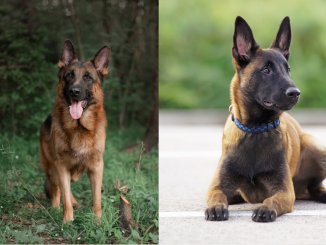
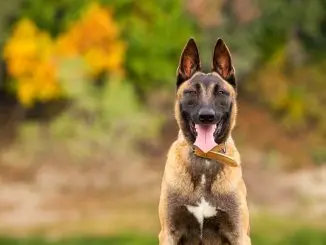

Be the first to comment